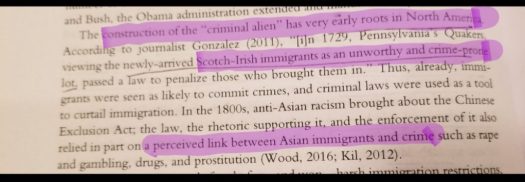In their chapter on the criminalization of trans immigrants in The Unfinished Queer Agenda After Marriage Equality, Pooja Gehi and Gabriel Arkles don’t just discuss the problem. They also consider different tactics for fighting it: litigation, bystander intervention, and creating sanctuaries.
Each of these strategies has limitations. Litigation can rely on the same “undeserving”/“deserving” stereotypes that need to be dismantled. Bystander intervention can rely on the prejudices of the bystander, with dangerous consequences. Sanctuaries can exclude those who are criminalized, and require significant political will to maintain.
But done thoughtfully with an intersectional analysis, each of these can make an important difference for particular problems under particular circumstances. Pooja and Gabriel cite law professor Mari Matsuda to remind us that “flexibility in tactics is crucial”:
There are times to stand outside the courtroom door and say, ‘this procedure is a farce, the legal system is corrupt, justice will never prevail in this land as long as privilege rules in this courtroom.’ There are times to stand inside the courtroom and say ‘this is a nation of laws, laws recognizing fundamental values of rights, equality and personhood.’ Sometimes, as Angela Davis did, there is a need to make both speeches in one day.






